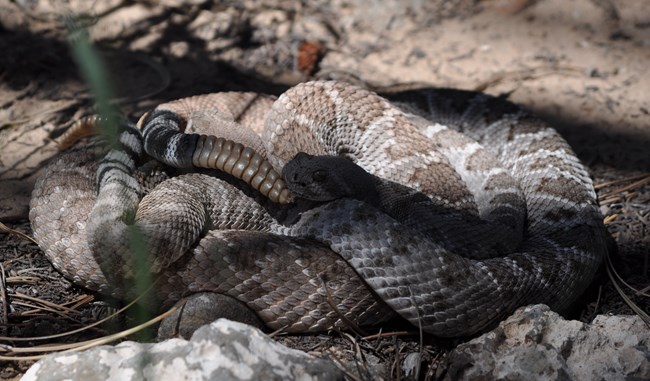Snake Safety
The most important thing to remember about snakes is to give them plenty of room to leave an area if encountered. Rattlesnakes will rarely attack humans unless provoked. Stay on the trail and keep an eye out at all times. Avoid reaching into areas that you cannot see behind that could be potential rattlesnake hiding spots. Do not wear sandals or any other open toe shoe that exposes flesh. Snake season typically will be the most likely time to encounter any snake, which is spring through summer. Be extra vigilant during these times.
In the rare event of a snake bite, especially a rattlesnake bite, prompt action is essential. Start by calling 911 immediately. The following is advice from the National Medical Association and American Journal of Nursing in the event you are bitten by a snake:
What You Should Do
- Move the victim to safety and try to safely identify the species of snake.
- Keep the victim calm. Minimize any movement to slow the body’s circulation.
- Remove jewelry or clothing that may become tight if swelling occurs.
- Apply a pad or sterile dressing to the wound. Immobilize the limb below heart level.
- Wrap a flat band (such as an elastic bandage or sock) a few inches above the bite and between the bite and the heart). Be sure you can slip a finger under the band. Do not cut off the victim’s circulation, but keep the band in place until you get to a medical facility.
- Seek immediate medical attention.
What You Should Not Do
- Do not wash the wound. Medical professionals can use venom at the wound site to identify the type of venom.
- Do not bleed the wound. This may lead to further complications such as blood poisoning or severe bleeding.
- Do not try to suck out the venom with your mouth. Some snakebite kits include a acuum-pump device for removing venom. These devices can help if they are used correctly within 5 minutes of the bite.
- Do not use a constrictive bandage or tourniquet. The idea is to stop the spread of venom through the lymphatic system, not to stop the blood flow.
- Do not try to catch or kill the snake. You will waste time and can receive another bite.

